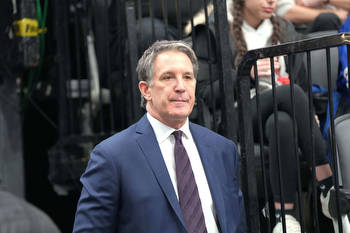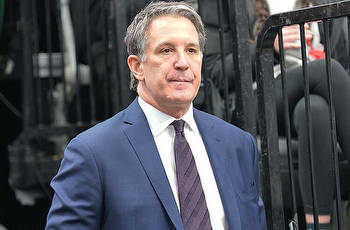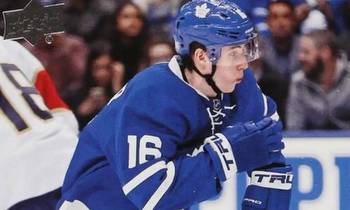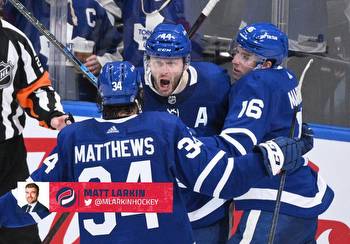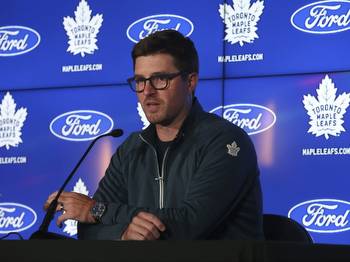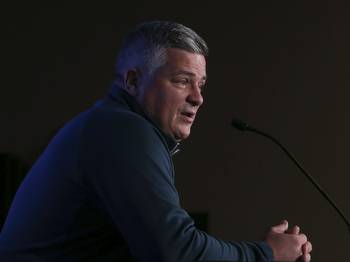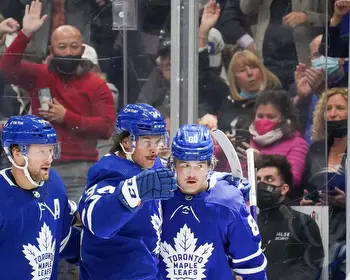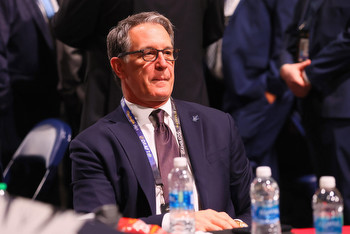Siegel: Brendan Shanahan and the Maple Leafs’ ‘Shanaplan’ need a win
It was mid-April 2014 and the Toronto Maple Leafs had just missed the playoffs for the eighth time in nine seasons after losing 12 of their final 14 games. Tim Leiweke, then the head of Maple Leafs Sports and Entertainment, had hired Masai Ujiri to fix the Toronto Raptors less than a year earlier.
Now, here he was introducing Brendan Shanahan as the hopeful fixer of the Leafs.
Nine seasons into that run as team president and Shanahan has indeed fixed, or overseen the fixing, of plenty.
Though it’s not exactly the highest bar, the Leafs have made the playoffs in each of the last seven seasons. The last two regular seasons ranked as tops in terms of points in franchise history. In fact, four of the five most productive Leaf seasons have come in the Shanahan era.
The Leafs have been, in theory anyway, a perennial Stanley Cup contender under his watch. That’s thanks in large part to the collection of some of the finest talent this city has ever seen — from Auston Matthews, who won the franchise’s first MVP in 67 years, to Mitch Marner and William Nylander.
Shanahan strengthened ties to the franchise’s illustrious if sometimes forgotten history. The Leafs built Legends Row outside their home rink to honour greats of the past, eschewed a cold, corporate logo for one with ties to earlier eras, and created a luxury box at what’s now known as Scotiabank Arena for alumni to enjoy games and wear their custom Leaf blazers.
Luster gradually returned to a franchise that lost it.
And yet, there’s no getting around the fact that over nine seasons with Shanahan overseeing the operation, the Leafs have won just a single, lonely playoff round — the same number as the Seattle Kraken, who just finished their second season of existence.
What followed that long-awaited playoff victory over the Tampa Bay Lightning this past spring was jarring: Familiar playoff demons returning in a five-game loss to the Florida Panthers; the controversial firing of GM Kyle Dubas, which confused and enraged many internally; the riskier than it seemed hiring of Brad Treliving as Dubas’ replacement weeks before the draft and free agency; and maybe most shocking of all, the curious, highly debatable decision to bring back the core of the roster yet again.
It has put — or should put — Shanahan and the so-called “Shanaplan” under the microscope more than ever before.
Shanahan once said that the challenge in Toronto, his challenge, wasn’t coming up with a plan. It was sticking to that plan.
As the Leafs head into their 10th season with Shanahan at the helm, you could argue sticking to the plan is at the core of the “Shanaplan.” In the beginning, it made sense. The Leafs had long tried to lottery ticket their way to success. They were memorably not interested in five-year rebuilds. Shanahan was different. He would be patient and practical. He had the long view always in mind.
It’s an approach that in time has come to feel less and less like patience and more and more like something else, stubbornness perhaps. An unyielding commitment to the plan and specifically to five players at the centre of that plan — the core of Matthews, Marner, Nylander, John Tavares, and Morgan Rielly.
The Leafs did not deviate from the plan, and the stars at its forefront when they were ousted by an inferior Columbus Blue Jackets team in 2020. They did not deviate from the plan when they were embarrassed by the Montreal Canadiens a year later. They did not deviate from the plan when they lost a close seven-game series to the Lightning in 2022. Nor would they change anything substantial after falling flat against the Panthers this past spring except for the GM who hinted at finally making a significant tweak.
Would they really run it back again, we wondered. The answer was yes, they would.
Shanahan insisted the Leafs wouldn’t make change for change’s sake. That’s long been the thinking internally. Change to the core would ultimately mean trading from within that core, which really amounted to trading Nylander or Marner, and the Leafs couldn’t possibly win a trade like that. That was always the thought anyway. Plus, with enough cracks at it, with enough experience, even the painful kind, players of that talent would eventually overcome in the postseason.
And these were players the organization believed in. Nylander, Marner and Matthews were the first three first-round picks of the Shanahan era. Tavares was added with a monster contract in free agency and eventually named the captain.
Rielly has been around longer than just about anyone.
Betting on that bunch again assumes they will collectively find it at some point. Which flies in the face of all the evidence so far. You could read it as a bold bet, as unshakable loyalty through hardship, of creating a plan and sticking to that plan even when it seems illogical.
You could also read it as risk-averse, trusting the known commodity again and again and again at the expense of what else might be out there, even when that known commodity has repeatedly fallen short.
Had Shanahan’s Leafs, after unraveling against the Canadiens in 2021, say, dealt from within that core, maybe they would have landed the piece, or pieces, or cap space that brought triumph in the two seasons that followed. Or maybe not.
Shahanan may well be proven right for betting on the status quo, minus Dubas and plus a few interesting parts, again this season.
If the Leafs hoist their first Cup since 1967 next spring, he’ll be praised for the “Shanaplan.” He’ll be lauded for believing and sticking with his guys through it all. They may well build a school in his name as Brian Burke once predicted for the person who led the Leafs back to championship glory. Process errors along the way, such as hiring a coach, Mike Babcock, before a GM was in place or letting Dubas enter last season without a contract, which created the stakes for a contract dispute that ended in Dubas’ firing, will be forgotten.
But if he’s wrong, and it’s the same playoff story again, Shanahan’s adherence to the plan will look naive. Like blind faith. Like insistence on being proven right rather than adjusting to what the evidence at hand demanded. The mistakes will all be magnified.
Can his vision withstand another season like that?
Shanahan has this season and the one after that remaining on the six-year extension he signed in the spring of 2019.
Until this point, the Leafs have always had a marquee attraction — those star players and even Babcock, Dubas, Lou Lamoriello and Sheldon Keefe — who tended to deflect attention away from Shanahan and the vision he ultimately oversees. No longer. Firing Dubas the way that he did and bringing the band back again should bring the “Shanaplan” into focus.
Shanahan and that plan need a win.








